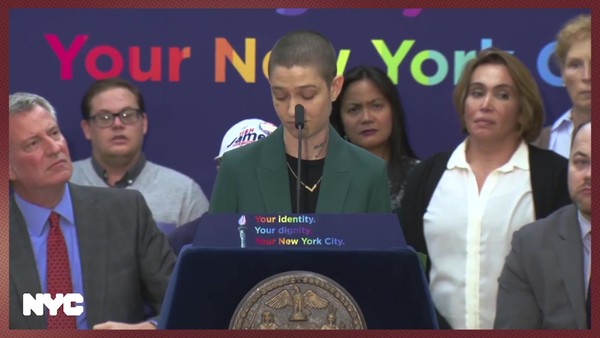Innovation > Innovation
WHAT3WORDS VOICE
WHAT3WORDS, London / WHAT3WORDS / 2019
Awards:

Overview
Credits
Overview
Why is this work relevant for Innovation?
Voice is fast becoming the default interface for technology, yet entering a location by speaking a street address is frustrating, time-consuming and inaccurate. what3words Voice is a revolutionary solution. We completely rethought how addressing works and designed a new system specifically for voice input that can be built into existing voice-enabled apps and products. In its first year since launch, what3words Voice is already revolutionising voice interactions with car navigation systems and home assistants, enabling people to input very precise locations by simply saying 3 words, in 22 languages to date.
Background
what3words addressing system has assigned every 3m square in the world a unique combination of 3 words. As most problems with speech recognition come from the technology misunderstanding, we designed a system that minimised the potential for confusion. Every 3 word address is unique, unlike road and town names. Homophones (like sail and sale) have been removed and, unlike any other addressing system, similar addresses are spaced far apart allowing optimisation of results based on the user’s current location. It’s already available in millions of Mercedes and Ford cars and used to route drones and order Ubers via Alexa skills.
Describe the idea
The huge rise in home assistants and features such as voice memos shows that people love using voice to control technology. Yet in situations where a location needs to be entered, such as navigation or deliveries, voice is proving too frustrating and inaccurate – people are avoiding using it and they’re having a poorer overall experience as a result. No other technology is addressing this problem, yet the potential for a huge variety of people and industries to benefit is huge – from delivery drivers having a quick, safe and hands-free way to enter their next location, to blind or disabled people being able to order a taxi or arrange a delivery independently using voice.
What were the key dates in the development process?
SEPTEMBER 2015 - started conceptual development
OCTOBER 2015 - started collection of basic voice recordings for analysis and testing
NOVEMBER 2015 - prototype code complete for Voice API
JUNE 2016 - collection of further voice recordings and refinement of accuracy
JANUARY 2017 - first running build on iOS
FEBRUARY 2017 - Voice live in what3words API
AUGUST 2017 - code running across iOS & Android, >95% accuracy achieved on English UK using Nuance VoCon Hybrid
FEB 2018 - Launch of the new Mercedes-Benz A-class with what3words voice navigation
JUNE 2018 - Concept of Amazon Alexa Demo recognising 3 word addresses
OCTOBER 2018 - Voice goes live in iOS and Android in English UK and US
NOVEMBER 2018 - Arabic, German and Spanish voice added across platforms
DECEMBER 2018 - Portuguese added
FEBRUARY 2019 - downloadable language packs added to apps allows release of 20+ voice languages
APRIL 2019 - what3words Ride skill (order an Uber to a 3 word address) planned release for Alexa
Describe the innovation/technology
To make a system work for voice, it has to be designed so that what you input can’t be confused with anything else. To build what3words Voice, we created an algorithm that examines all the options returned by a speech recognition system such as Nuance when a 3 word address is entered, then evaluates these based on where they are in the world in relation to the speaker. We refined the accuracy further by making over 200,000 recordings of native speakers of 22 languages reading 3 word address. This allowed us to return the correct location to the user an incredible 95% of the time.
what3words Voice can be used via a free app for iOS and Android, enabling people to enter 3 word addresses into the app using voice and then save, share or navigate. It can be built into existing apps and systems via an API or SDK, making it easy for developers to add 3 word address input into their voice-enabled apps, skills and vehicles. The what3words consumer app also enables people to speak locations into their favourite apps that aren’t voice-enabled such as Google Maps, Citymapper, Waze and Uber.
Describe the expectations/outcome
The easy-to-use tech and varied languages we offer means that we have now paved the way for further exciting uses of what3words voice in a scalable and sustainable way all over the world. An early adopter of our technology – Mercedes-Benz – was the first automaker to build in what3words voice navigation and has just this week launched the world’s first car with what3words voice navigation in Chinese. When combined with Ford, there are over 10 million cars on the road with what3words. Our mission is for what3words Voice to become an automotive industry standard, enabling drivers to finally experience smooth, accurate and frustration-free voice navigation. And our big future goal is to become a standard for any voice interaction, offering everyone in the world a human-friendly, hands-free and accurate way to enter locations into machines, from the navigation apps of today to the voice-controlled, self-driving vehicles of tomorrow.
More Entries from Innovative Technology in Innovation
24 items
More Entries from WHAT3WORDS
8 items

